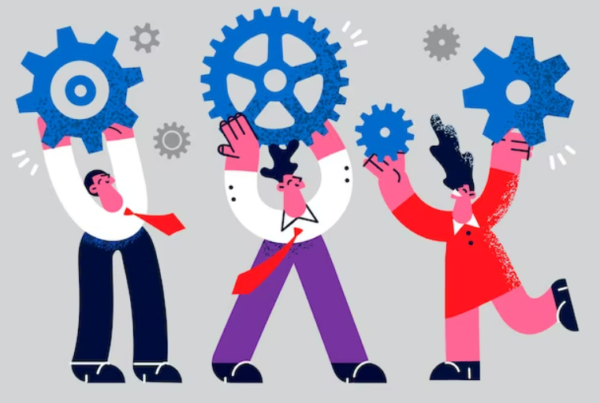There are numerous techniques to implementing agile, and many of them necessitate multi-disciplinary teams, in which team members wear multiple hats and do a variety of tasks.
Agile success depends on role flexibility and the resulting responsiveness. Instead of meeting a problem and then having to wait for additional resources or a certain skill set, team members can keep the project moving by resolving it as soon as possible. Instead of being bound by rigid role definitions that demand formal handoffs from team member to team member, the group can allow work to flow more freely between members. Furthermore, when team members fill many tasks, the team is better prepared to alter work when people go on vacation or when their projects ebb and flow.
People can benefit from having many roles. After all, ensuring that people have a positive experience is vital. Working on a wider variety of jobs is often more fascinating and challenging than doing the same thing day after day, in addition to providing opportunities for improvement. Team members are more engaged and satisfied as a result of this.
How to Get the Most Out of Role Flexibility
All of this sounds fantastic, but how many jobs can a team member take on before becoming overburdened? How much is excessive? When asking someone to wear several hats, there are six things to keep in mind.
- First and foremost, be just. Make sure you’re not merely asking folks to do a lot of work when you ask them to play many roles. When workers wear several hats, they should do so within the scope of the job they’re paid to do. Check that the responsibilities are still acceptable for what you’d expect one person to do. Asking employees to be “multi-disciplinary” should not be used as a justification for expecting them to accomplish two (or more) tasks while only being paid for one.
- Make sure you know what your overarching goal is. People require clarity on the larger picture—the work’s purpose—when they’re doing their jobs. This is especially true when people have several responsibilities. A firm understanding of the work’s “why” serves as a compass. As a result, even though tasks vary and alter throughout time, the fundamental goal remains the same. Ensure employees have a clear line of sight to understand how their work affects the team and, ultimately, the consumer. Clarify the work’s purpose and why on a regular basis.
- Make sure everyone knows what their responsibilities are. When people play numerous roles, they must be aware of each one. Make the success factors for the roles you’re asking them to do explicit, and tell them when and how they should change from one to the next. You’ll free them up to make judgments about when to perform essential duties and empower them to be flexible in their use of talents by providing advice and boundaries.
- Conflicting duties should be avoided. It can be stressful for people to play roles with competing success criteria. A responsibility that needs a lot of client contact, for example, may necessitate the team member being away from the group. It will be tough for that person to succeed if you also want them to take on job that demands a lot of hands-on time with the team. Either reorganize the shared roles so they don’t conflict, or establish clear guidelines for how they’ll carry out each set of obligations.
- Consider your team’s dynamics. Make sure that team positions don’t place folks in embarrassing circumstances with their coworkers. Taking on a leadership role for team members who were formerly peers might be one of the most difficult jobs for employees. It’s good to promote people, and this typically implies they’ll be in charge of a team they previously worked on. However, if you require them to switch between leading and contributing at different times, it may cause confusion for all parties involved. Instead, create a team atmosphere where leadership emerges organically. When their skills are most relevant to the project, different people can step forward. Also, make it obvious when someone has official leadership responsibilities and when they don’t.
- Offer assistance. Make sure you’re providing the necessary support for the flexibility you’re demanding when you want employees to be flexible in their employment. People who believe they have a lot of capacity are more capable of handling increased demands. People’s opinions of their ability can be boosted by providing opportunities for learning and skill development, plenty of acknowledgment, and a culture that promotes a sense of purpose and strong relationships.
While forming a multidisciplinary team is a crucial approach for agile success, it’s equally important to think about people and make sure they’re engaged and supported. Fairness and clarity of aim and responsibilities are essential. Ensure that roles are not in conflict and that tough relationships with team members are not introduced inadvertently. Provide assistance so that folks aren’t overburdened by their various responsibilities. Individuals, teams, and the firm will benefit by putting people first and ensuring work is aligned with what is best for employees.




